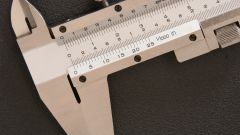Instruction
1
Dimensional weight reflects, first of all, the size of the load. The latter may not be heavy, but take up much space. The car, the Luggage compartment of the plane or the van of the truck holds a certain amount of Packed items. Therefore, the rate for transportation is not calculated by the actual weight and the volume ofthat cargo occupies.
2
Dispatchers freight service conducted the measurements, their "verdict" as a rule, is not discussed. But the sender should be able to calculate itself to provide for the material costs. The calculation formula is as follows: 1 kg equals 6000 cubic inches and 1 cubic meter is equal to 167 kg. the Volume multiplied by 167 kg.
3
Cargo is defined as a rectangle. Measured length, width, height of package, whether it's a box, roll or bag (here almereyda most protruding parts). Paid for the highest value of actual or volumetric weight.For example, the product weighs 65 kg and is Packed in a big box 90х90х90. Multiply the height, length and width. The figures show the volume - 0,729 m3. Multiply these data on the 167 and get 121,7 kg. This will be the volumetric weight. Although the actual weight is less, will have to pay именно122 kg. Figures are rounded upward. Another example. You are sending 120 kg of soft toys in plastic bags with a volume of 2 cubic meters. Pay for the goods should be according to the formula, the highest value of the volumetric weight, namely: 334 kg (167х2). Soft items should be Packed as tightly as possible to avoid paying too much. The same product, well pressed into bales, for example, 0.5 m3, will provide significant savings in the payment, because the goods will be deemed to be voluminous.
4
When the volumetric weight exceeds the actual, then paid so many pounds, how many leaves. For example, in a box the size of 60х40х60 are objects that weigh 48 kg Volumetric weight is 24 kg, respectively, paid 48 kg. so the shipping cost is calculated by volumetric weight if it exceeds actual.





